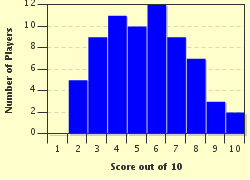Quiz Answer Key and Fun Facts
1. What Italian city was ruled by the Sforza family? Leonardo spent the next seventeen years of his life there.
2. Leonardo wrote a letter of introduction of himself, sending it to Ludovico Sforza before his arrival. In the letter, which of his skills did he emphasize?
3. Finally! After several years, Leonardo was given a commission by Ludovico Sforza. What was the name of the statue that he was to construct?
4. It was during his time at the Sforza court that Leonardo began in earnest his collection of notes. Approximately how many pages have survived to this day?
5. One of Leonardo's inventions, sketched in 1487 while in the court of Ludovico Sforza, looked very much like which weapon first used during WWI?
6. When Ludovico Sforza married, Leonardo was asked to play an intricate role in the celebration. What role did he fulfill?
7. Another intellectual in the court of Ludovico Sforza was Luca Pacioli, with whom Leonardo formed an association. Luca wrote a book which Leonardo illustrated. What was the topic of the book?
8. During his stay at the court of Ludovico Sforza, Leonardo maintained a small group of servants and apprentices. It was at this time he took in an apprentice who stayed with him for the next twenty-four years. What did Leonardo call this apprentice?
9. While Leonardo was employed by Ludovico Sforza he painted a portrait of his wife, Beatrice d'Este.
10. Ludovico Sforza commissioned Leonardo to paint "The Last Supper" at Santa Maria delle Grazie, a church and convent in Milan.
Source: Author
ponycargirl
This quiz was reviewed by FunTrivia editor
bloomsby before going online.
Any errors found in FunTrivia content are routinely corrected through our feedback system.

